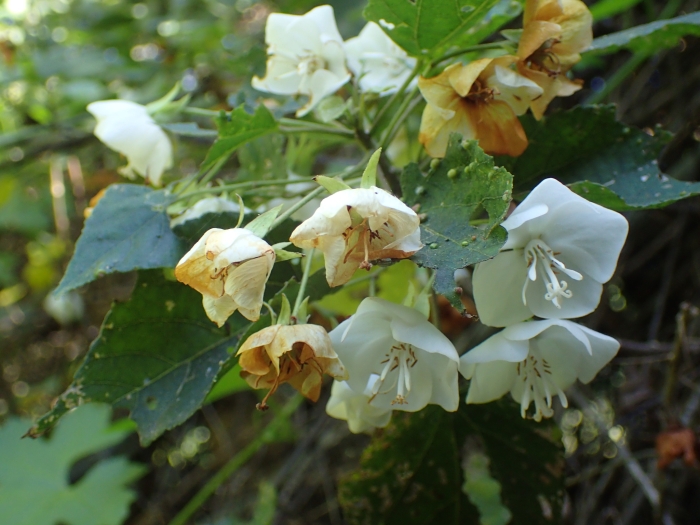Pink Cloud Tree
(Dombeya tiliacea)
Pink Cloud Tree (Dombeya tiliacea)
/
/

Mahomed Desai
CC BY 4.0
Image By:
Mahomed Desai
Recorded By:
Copyright:
CC BY 4.0
Copyright Notice:
Photo by: Mahomed Desai | License Type: CC BY 4.0 | License URL: http://creativecommons.org/licenses/by/4.0/ | Rights Holder: Mahomed Desai | Publisher: iNaturalist | Date Created: 2022-05-01T10:32:39-07:00 |

























Estimated Native Range
Summary
Dombeya tiliacea, commonly known as the Pink Cloud Tree, is a deciduous tree native to the Eastern Cape region South Africa, specifically thriving in forest margins and woodland areas. It typically grows at a moderate rate to a height of 10-20 feet (3-6 meters) and a width of 10-12 feet (3-3.7 meters). The Pink Cloud Tree is characterized by its rounded canopy and heart-shaped leaves. During the winter months, it produces clusters of fragrant, pink, showy flowers that resemble those of a hydrangea, hence one of its other common names, Tropical Hydrangea. The flowers are particularly attractive to pollinators such as bees and butterflies.
The Pink Cloud Tree is valued for its ornamental flowers and relatively small size, which makes it suitable for smaller gardens and urban landscapes. It is often used as a specimen tree or in mixed borders for its winter flowering period, providing color and interest during a season when few other plants are in bloom. This tree prefers full sun to part shade and adapts well to a variety of soil types, including clay, loam, and sandy soils, as long as they have medium drainage. Regular watering is necessary, especially during dry periods. While generally low-maintenance, it may require occasional pruning to maintain its shape and remove any dead or damaged branches. There are no major disease or pest issues, but it is important to avoid waterlogged conditions which can lead to root rot.CC BY-SA 4.0
The Pink Cloud Tree is valued for its ornamental flowers and relatively small size, which makes it suitable for smaller gardens and urban landscapes. It is often used as a specimen tree or in mixed borders for its winter flowering period, providing color and interest during a season when few other plants are in bloom. This tree prefers full sun to part shade and adapts well to a variety of soil types, including clay, loam, and sandy soils, as long as they have medium drainage. Regular watering is necessary, especially during dry periods. While generally low-maintenance, it may require occasional pruning to maintain its shape and remove any dead or damaged branches. There are no major disease or pest issues, but it is important to avoid waterlogged conditions which can lead to root rot.CC BY-SA 4.0
Plant Description
- Plant Type: Shrubs, Trees
- Height: 10-20 feet
- Width: 10-12 feet
- Growth Rate: Moderate
- Flower Color: White
- Flowering Season: Winter
- Leaf Retention: Deciduous
Growth Requirements
- Sun: Full Sun, Part Shade
- Water: Medium
- Drainage: Medium
Common Uses
Bird Garden, Butterfly Garden, Low Maintenance, Potted Plant, Showy Flowers
Natural Habitat
native to the Eastern Cape region South Africa, specifically thriving in forest margins and woodland areas
Other Names
Common Names: Pink Cloud Tree , Tropical Hydrangea , Tassel Tree
Scientific Names: Dombeya tiliacea , Assonia natalensis , Assonia tiliacea , Dombeya decus-silvae , Dombeya dregeana , Dombeya elegans , Dombeya gracilis , Dombeya natalensis , Leeuwenhoeckia tiliacea , Leeuwenhoeckia tiliacea , Xeropetalum tiliaceum
GBIF Accepted Name: